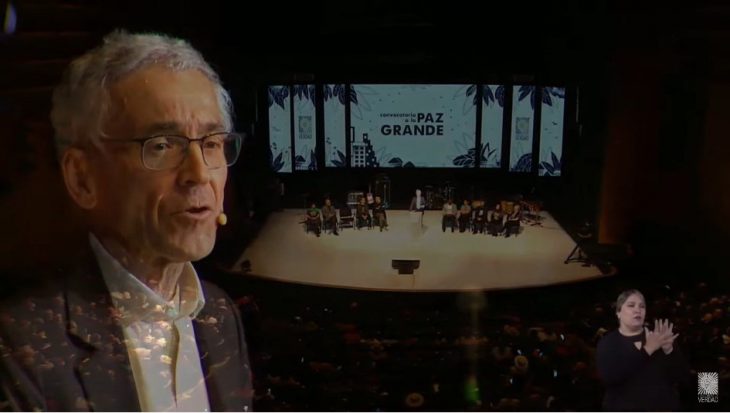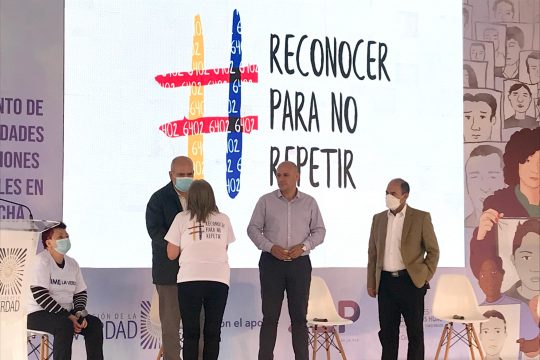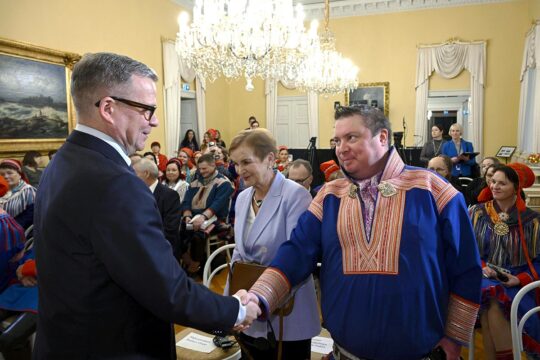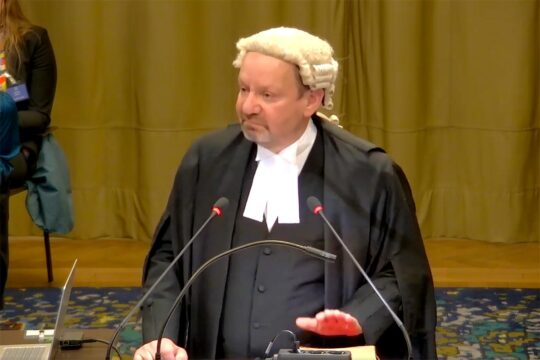"We want it to produce the effect of a stone falling into a body of water and rippling across the numb surface of Colombia," said Francisco de Roux, the Jesuit priest and promoter of economic projects in conflict areas, as he unveiled the final report produced over three and a half years by the Truth and Reconciliation Commission (TRC) he chaired.
With these words, read out on June 28th at the Jorge Eliécer Gaitán Theatre in Bogotá, Father de Roux - the visible face of the TRC and one of the country's most respected spiritual leaders - invited 48 million Colombians to get out of the "war mode" that has left one in five citizens officially registered as victims. He called on them to accept ethical and political responsibilities for the damages caused by 60 years of fratricidal violence in order to move forward, seek solutions to the structural problems afflicting Colombia for decades, and shake off the collective indolence that allowed it to happen. "Otherwise, Colombia's wonders will continue to float above one of the most brutal and longest humanitarian crises on the planet," he warned.
His 'call for a great peace' is the prologue written by him that bookends the final report written by the TRC stemming from the 2016 peace agreement with the Revolutionary Armed Forces of Colombia (FARC), which for three years listened to 30,000 people and received 1,000 reports from organisations and institutions.
Although only half of its ten chapters have been published so far, unlike other truth commissions its core message is less about documenting the harm caused by the internal armed conflict and more about how to ensure that it doesn’t happen again. In De Roux's words, it’s about answering the question: "How we dare let it happen and then let it continue?”
A symbolic launch
The public release of the TRC report was full of symbolism. Outgoing president Iván Duque preferred to travel to the global oceans summit in Lisbon rather than publicly receive the report from a commission his political party was openly critical of. In stark contrast, President-elect Gustavo Petro, a former congressman and onetime rebel leader who signed a peace process three decades ago, who will take over the reins of the country in two weeks, was present and made his first speech after winning the election. "I will read the recommendations made to the state and to society (...). They will become effective in Colombia’s history," he promised.
Sitting at his side was Francia Márquez, a renowned environmental and Afro-Colombian leader who will become the country's second female vice-president and whose community of La Toma, in the mountains of the southwest Colombia, was heavily victimised by paramilitaries.
The event took place in a theatre named after the Liberal politician whose 1949 murder is considered a milestone in the violence that led to Colombia's internal armed conflict. Just days earlier, former FARC guerrilla commanders had, for the first time, publicly acknowledged and apologised to their victims for thousands of kidnappings at a hearing organised by the transitional justice’s judicial arm, known as the Special Jurisdiction for Peace or JEP.
An encyclopaedic, rushed report
The mission of the Colombian TRC was peculiar from the outset. Not only because it was born at the same time as the JEP, which is investigating, judging and punishing those responsible for the most serious crimes, but also because Colombia has been reconstructing its traumatic past for 15 years. The National Centre for Historical Memory, a government agency, has alone produced more than a hundred book-length investigations over three administrations.
For this reason, the TRC first had to agree on its strategy for truth-building. Some of its 11 commissioners initially considered that its core mission was to produce an in-depth report, while others saw it more along the lines of 'third generation commissions' which, like in Peru, sought to involve society in public hearings where atrocities were clarified and especially allowed for collective catharsis. In the end, they ended up prioritising the first one and, in the midst of the Covid-19 pandemic and political polarisation, the reach of their public spaces was severely curtailed.
Hence, its report gained increasing prominence. The full text is not yet known and its published chapters average 500 pages, so the final length might well exceed 6,000 pages. Five of its ten chapters have been launched so far: first the central chapter of 'findings and recommendations' and one with victims’ testimonies, plus Father de Roux’s prologue; then came texts on how the war affected children, exiled Colombians and, more recently, women and LGBT people. A historical account of the conflict was released yesterday, with chapters on human rights violations, territories, ethnic minorities and victims' resistance strategies still in the works.
Beyond this gradual publication schedule, it’s evident that the TRC had to rush to get there in time. None of the texts have any graphic design, but are rather Word documents in which sentences are even duplicated, infographics are referenced but don’t appear, or key contexts are repeated. This haste has generated annoyance, with 60 photographers penning a public letter to complain about the report not containing a single image in a country with a long tradition of photojournalism on the conflict.
The “persistent factors”
In their 895-page central chapter, the TRC commissioners attempted to answer a question similar to the one De Roux underscored on the day of its launch: why is it that, despite multiple agreements and successful peace negotiations with at least seven illegal armed groups, including left-wing guerrillas and right-wing paramilitaries, the armed conflict was never closed but rather kept recycling itself?
To answer this question, two words appear at least 40 times and become one of the report’s narrative threads: the “persistence factors”.
Although there are specific episodes and testimonies woven together, its strength lies not in the narrative of what happened but in its reading of why it occurred. It does provide shocking and little-known data, such as the fact that nine out of ten victims were civilians and that only 2 per cent of the deaths occurred in combat. And it does delve into the harm suffered by specific population groups, including ethnic minorities, women, children, LGBT people and exiles. But what stands out is the TRC’s search for interpretations that may serve as common ground.
In the Truth Commission's view, the conflict lasted over six decades due to the resistance of different sectors to democratic openings that sought to ease the access of more diverse voices into politics. To drug trafficking, which established its model of violent accumulation of wealth and power in peripheral regions, as well as to the failed prohibitionist policy - and misnamed 'war on drugs' - that never solved social and economic exclusion there. To the security model, which viewed political opponents as 'internal enemies' to be annihilated. To scandalous impunity, which normalised the huge gap between crimes that occurred and those solved. To the racism in place since colonial times, which contributed to millions of Colombians looking the other way when indigenous or Afro-Colombians were brutalised. Or to the negative stereotypes on 'others' that sustained hatred.
The FARC's responsibility
These reflections are striking because they are not construed as structural roots of war but rather as conditions that allowed it to fester over time, a conceptual difference that was already present in the peace agreement and which the TRC maintained using other words. This is significant because it prevents individual actors from presenting them as justifications for their decision to take up arms. On the contrary, instead of a self-indulgent gaze, the report focuses on the responsibilities of each actor.
In the case of guerrillas, including FARC, it states with clarity that "they lost legitimacy when they used inhumane and criminal methods of terror to achieve their ends". In addition to attributing responsibility for specific crimes like kidnapping and recruiting child soldiers, the TRC questions that guerrillas such as FARC imposed violent and arbitrary orders on communities, that some of them never contemplated the democratic struggle in their horizon, and that their short-sightedness facilitated the emergence of violent phenomena such as paramilitaries, affecting above all the civilian population. Instead, the TRC argues, it was when they laid down their arms that the democratic advances they theoretically sought on the battlefield actually materialised: "The solution to the structural problems was not war; on the contrary, with it problems increased (...). Democracy did not open up with gunfire, it opened up with the push of a citizenry that turned its back on war."
In a particularly harsh section, the TRC argues that the Colombia of the last half-century has not been a dictatorship but a "restricted, imperfect, semi-closed democracy" and that this means that there were never any legitimate reasons to take up arms. "This 'right to rebellion', reserved in the international community for those who rise up against oppressive regimes, does not apply to the Colombian case," it stated.
These words suggest that the Truth Commission heeded the voices that - as Justice Info recently reported - alerted it in recent months to the potential risks of a report that gave greater weight to state responsibility and was softer on the guerrillas.
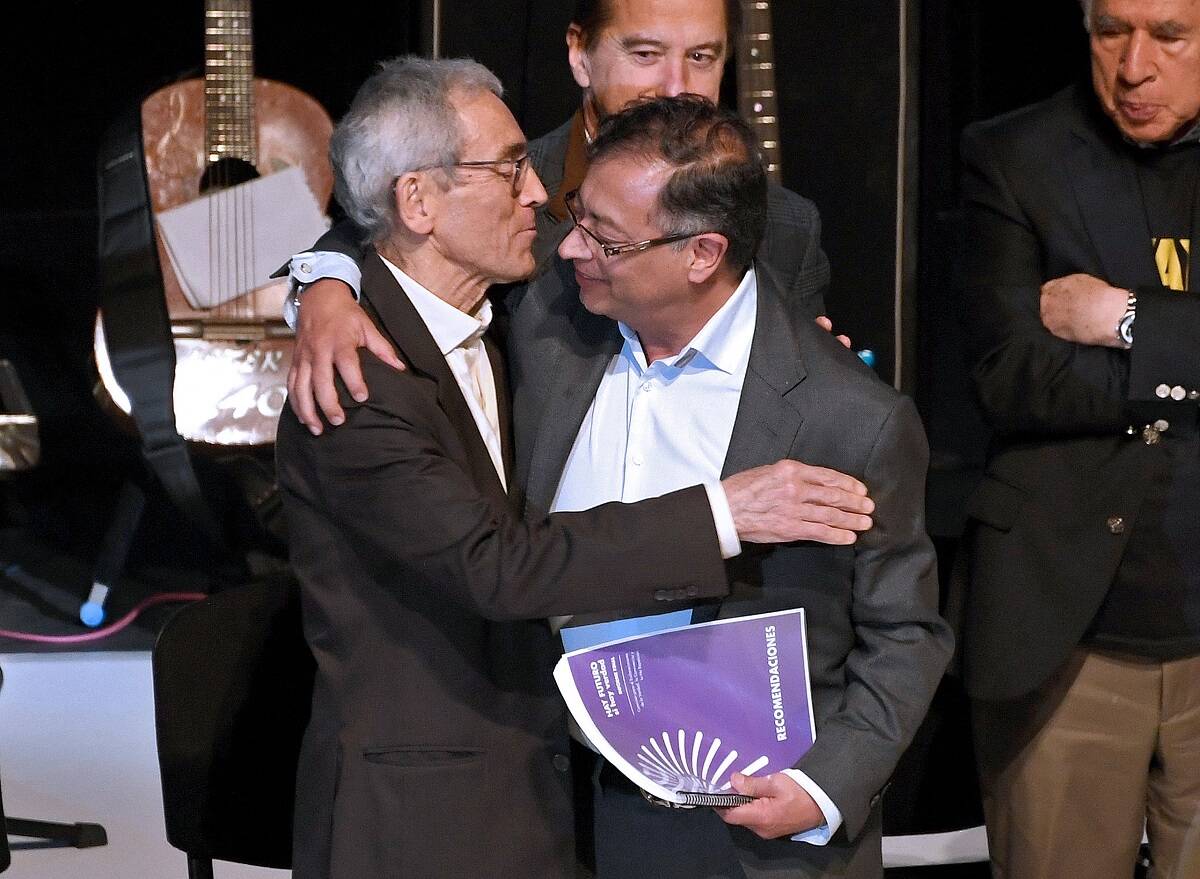
The weight of state weakness
The Colombian state also figures prominently in the report. The TRC points to the direct participation of some of its public officials in crimes such as the annihilation of the leftist political party Patriotic Union or the extrajudicial executions of civilians falsely passed off as rebel fighters, but more interestingly grants more weight to its omissions and the effects these had on the violence.
In the TRC’s view, the absence of the administration of justice or public services in peripheral regions undermined citizens' confidence, and the security policy succeeded in protecting some while leaving others completely defenceless. In many regions the state's institutional offer did not exist beyond the physical presence of the army, the report says.
Commissioners were particularly critical of the state for having allowed links between public and military officials and paramilitary groups over several decades, in practice delegating tasks like providing security to armed civilians, and for maintaining, to this day, a denial of a relationship that has been confirmed by judicial decisions of the Inter-American Court of Human Rights and Colombia’s JEP. "Illegitimate methods are doubly condemnable if they are practised by legally constituted institutions because citizens have placed their trust in them," the report says.
The path forward
In its final part, the TRC’s central text turns these persistence factors into a hundred recommendations for the future. Fulfilling them, it argues, would allow an "ethical turnaround" and a "positive commotion" that would help prevent a repeat of violence.
This diverse list of measures ranges from the more tangible, such as recovering the pace of the peace deal’s implementation that has slowed under Duque, or achieving a "grand peace" with other armed groups and criminal organisations that still carry out violence, to the structural, such as reversing racism and stigmatisation in order to "widen the circle of our us". Some are short-term, such as moving the National Police from the Defence Ministry to rescue its civilian role, strengthening collective redress or officially recognising exiles. Others require a medium-term time horizon, such as strengthening the presence of prosecutors and judges in peripheral regions, taking up a security sector reform, or advancing political reform to ensure a greater plurality of voices in decision-making.
In some cases, the TRC deals in detail with problems that many might not connect to the Colombian conflict. For example, the report devotes considerable space to proposing a new approach to drug policy, from strengthening productive alternatives for peasant farmers to legally regulating the cocaine market. "It is imperative that Colombia leads this paradigm shift at the global level with the legitimacy and strength deriving from it being one of the countries that has suffered the most from the consequences of violence and the war on drugs", it argues.
And other topics, such as continuing to push for the acknowledgment of responsibilities, reveal the Truth Commission's awareness of the limitations of its own work in a politically divided country. "The participation of those responsible was certainly limited," it admits at one point, explaining that only 140 perpetrators - 86 former FARC guerrillas, 31 former paramilitaries and 23 military and police officers - took this step.
The TRC’s legacy
Uncertainty on the report’s next steps is large, with only four weeks before the TRC closes its doors and its mandate comes to an end. Beyond some reading guides and an interactive trans-media - part of what the Commission calls its 'legacy' - there are still many questions about how its thousands of pages of reflections will be translated into content that is more accessible to the whole of Colombian society and how it will reach the sectors that have been most sceptical of its work.
In the immediate term, it will enjoy a much more favourable political environment than during the past four years. Petro, the new president, has pledged to read its recommendations. Two weeks ago he also promised to create a Ministry of Peace that would coordinate implementation of the peace deal and announced that Colombia will cease to be the only country in the hemisphere where the police force is still under the Defence Ministry, although he’ll have to deal with the huge expectations surrounding his arrival and the administrative challenges of executing many of these promises.
It will be him and his government who will carry the brunt of the tasks needed to fulfil Father de Roux’s hope in the prologue: "Before us is the possibility of claiming, as a body of a responsible nation, the wound of 10 million victims as our own and rescuing ourselves in an inclusive, fair and reconciled nation".


